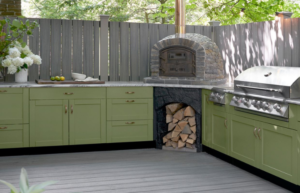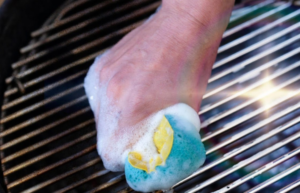8 Things You Didn’t Know About Travertine

One of the most popular flooring options today is travertine. When you think of stereotypical sand-coloured blocks, you’re probably visualising this material. While modern and technologically treated, it gives off a raw Spartan appearance that nature loving home owners enjoy. Let’s look at some of its defining characteristics.
- It absorbs water
Travertine is a waterborne substance. It forms through the accumulation of calcium carbonate deposits in underground rivers and springs. As the sediments settle and bond, gases escape at high pressures, leaving thousands of tiny holes and pores. It’s these speeding gases that give travertine its distinctive pockmarks. When travertine is exposed to water, the liquid quickly seeps into those pores and sinks to the surface below. It’s ideal for winter weather because moisture never stays on the surface, so it can’t freeze or thaw to cause unexpected drips and falls. This makes travertine good for poolside paving, but you should probably avoid using it in outdoor tubs or pool floors.
- It has a W rating
Outdoor paving doesn’t often come into contact with water unless it’s raining. If it’s a garden setting, the paving may get wet as you water the lawn. And if your paving is next to a swimming pool, then, of course, there’s a lot more splashing about and liquid exposure. For safety reasons, the travertine paving materials are often rated according to their potential for slippage. The better the rating, the less likely it is to cause a slip. Travertine is rated W, which means it has a low risk of slipping while wet. This makes it a good choice for paving, especially in wet winter periods, on fountains, around water features and bordering swimming pools.
- It can withstand salt
When you’re selecting the type of stone to use on walls and floors, salt isn’t high on your list of considerations. However, salt water pools and ponds are gaining popularity. You might have noticed that swimming in the sea or ocean takes less energy and effort than swimming in a lake or swimming pool. This is because the salt and mineral content in the ocean makes it denser, giving your body more buoyancy. This same principle applies to saltwater lakes, and now salted swimming pools. Of course, the salt does sting your eyes more than chlorine does, but salt water pools are preferred as the more natural choice. Since travertine isn’t affected by salt, it’s a common feature in salt-water pool decks.
- It’s not affected by chlorine
Swimming pools contain several substances that might react with pavers. There’s the water, which can pool on the surface and cause slips and falls. And there’s the chlorine which is used to sterilise the water. Chlorine is a strong chemical, and it has potential bleaching effects when exposed to in high doses. Travertine is resistant to chlorine, so it’s safe to use on poolside deck floors. If for some reason you’d like your paving to be brighter, you can safely use chlorine bleach on travertine flooring, though it’s really not necessary.

- It can be finished in four ways
The naturally porous appearance of travertine is considered attractive in certain settings. It gives a culturally superior ambience, recalling traditional stone carvings. It calls to mind ancient Greek and Roman architecture. In garden paving, it fits right in, providing an aged, rustic effect. If you’d like to give your stone a little more advanced treatment, you have four options. For indoor use, you can select polished or honed finishing. Polish gives it a marble-like gloss while honing leaves it muted and matte. Brushing and tumbling are better for outdoor finishing, and they give your floor a pleasant grip and non-slip texture.
- It reacts to acids
The chemical composition of travertine is based on calcium carbonate. This is an alkaline substance, which means it actively reacts with acids. A lot of food products contain mild acids. These include oranges, lemons, vinegar, tomatoes, and red wine. If any of these foods come into contact with travertine, they will cause a stain that is hard to remove, especially because travertine is full of visible holes and pores. For this reason, you should avoid using travertine on countertops. While it’s true that travertine can be sealed to make it less porous, the amount of maintenance needed for countertops makes travertine an unwise option.
- It never has identical pieces
Travertine comes in a wide range of colours. It can be green, gold, cream, or even red. It usually has one solid tone with veining in other shades, and these patterns are so distinct and varied that you can have two stones from the same quarry with completely different hues. Even with tiles from the same batch, it’s impossible to find identical twin pieces of travertine. This gives travertine floors and beautiful mottled appearance that looks quite artistic.
- It does poorly with conventional cleaners
As we’ve mentioned before, travertine is made from calcium carbonate. Most household cleaners have acid bases, whether it’s the citrus flavour or the more complex ingredients. If you use an acidic cleaner on smooth polished or honed travertine, it will get scummy and smeared. If you use these products on tumbled or brushed travertine that isn’t sealed, it will likely cause stains, defeating the purpose of cleaning. Only wash your travertine with mild soaps and neutral or alkaline cleaning agents. You can also use dilute ammonia mixtures to safely clean your tiles and paving, but ensure good ventilation to avoid adverse effects.
More Articles:





